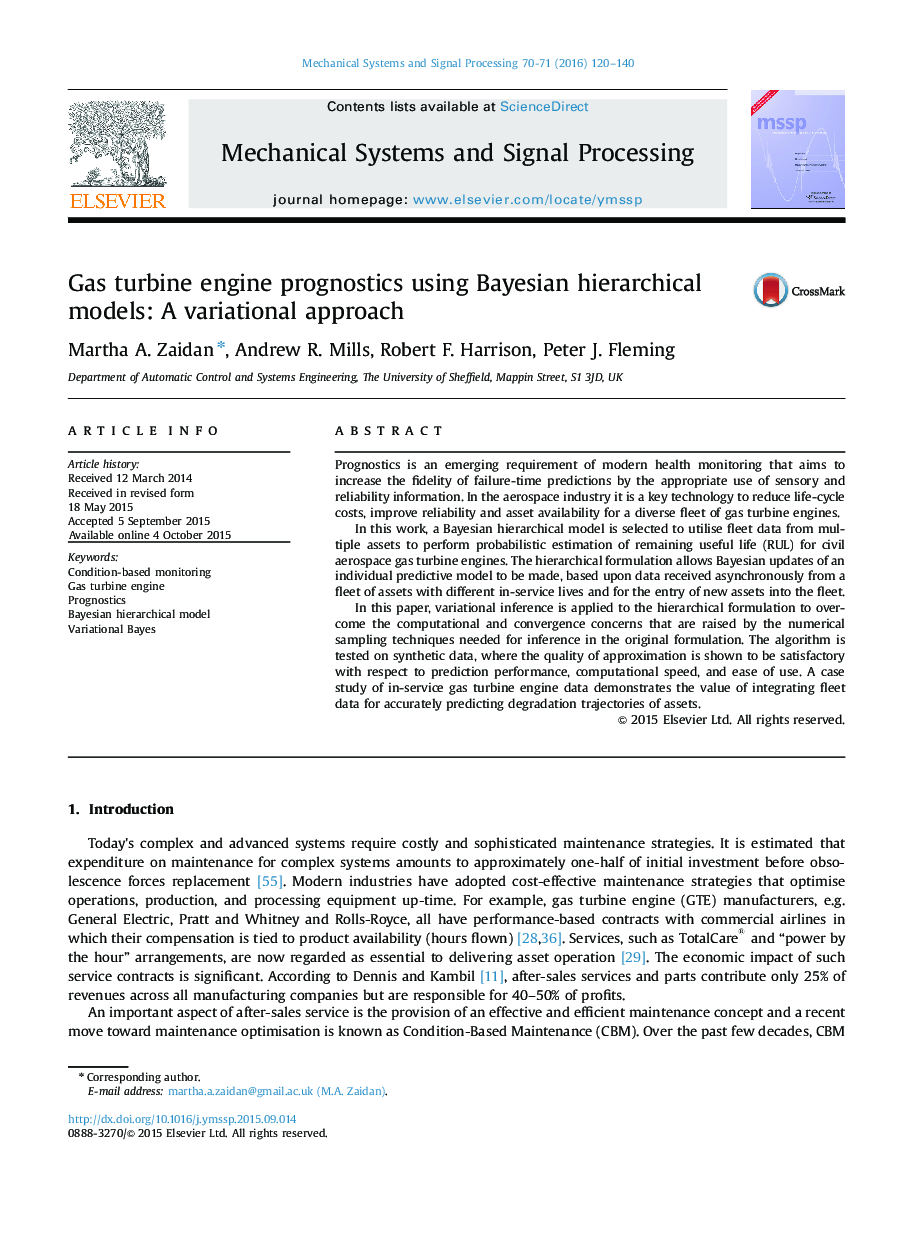| Article ID | Journal | Published Year | Pages | File Type |
|---|---|---|---|---|
| 565420 | Mechanical Systems and Signal Processing | 2016 | 21 Pages |
•Bayesian approach is promising for gas turbine engine prognostics.•Bayesian hierarchical model (BHM) uses optimally degradation data for prognostics.•The original BHM formulation uses sampling method, leads to inefficient prognostics.•Variational inference substitutes sampling method to be realised in prognostic practice.•Prediction performance, computational speed and ease of use are satisfactory.
Prognostics is an emerging requirement of modern health monitoring that aims to increase the fidelity of failure-time predictions by the appropriate use of sensory and reliability information. In the aerospace industry it is a key technology to reduce life-cycle costs, improve reliability and asset availability for a diverse fleet of gas turbine engines.In this work, a Bayesian hierarchical model is selected to utilise fleet data from multiple assets to perform probabilistic estimation of remaining useful life (RUL) for civil aerospace gas turbine engines. The hierarchical formulation allows Bayesian updates of an individual predictive model to be made, based upon data received asynchronously from a fleet of assets with different in-service lives and for the entry of new assets into the fleet.In this paper, variational inference is applied to the hierarchical formulation to overcome the computational and convergence concerns that are raised by the numerical sampling techniques needed for inference in the original formulation. The algorithm is tested on synthetic data, where the quality of approximation is shown to be satisfactory with respect to prediction performance, computational speed, and ease of use. A case study of in-service gas turbine engine data demonstrates the value of integrating fleet data for accurately predicting degradation trajectories of assets.
